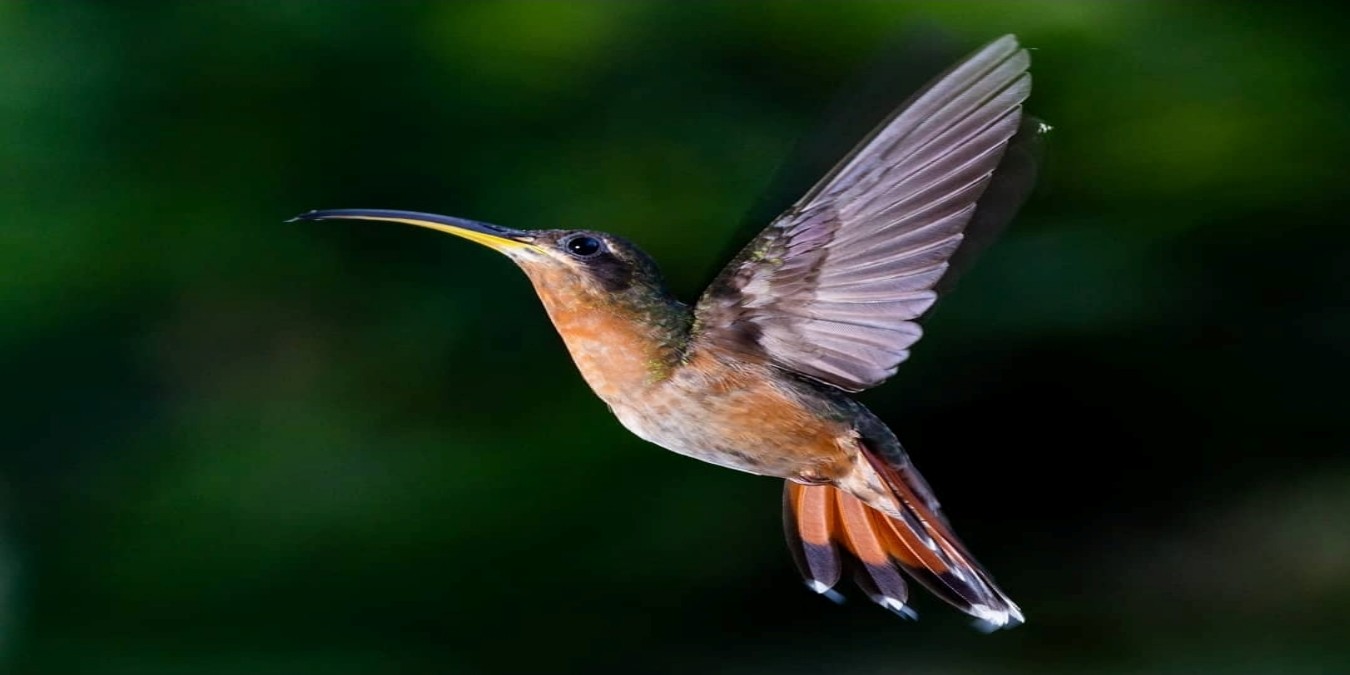Known to many as one of Tobago’s quieter forest jewels, the Rufous-breasted Hermit (Glaucis hirsutus) is a master of subtle beauty and grace. Measuring about 12 cm (5 inches), it is one of the larger hummingbirds on the island, a slender, swift-winged resident that thrives in the shaded undergrowth of forests and along cool mountain streams.
Unlike the dazzling, jewel-toned hummingbirds we often spot in gardens, the Hermit’s charm lies in its understated hues, soft browns brushed with rufous tones, a long, gently curved bill tipped in yellow, and a tail adorned with striking white tips. In the filtered light of the forest, it glows with a quiet, earthy elegance.
This species primarily feeds on nectar, visiting a wide variety of forest blossoms, but it also captures tiny insects and spiders in mid-air. Its nest is a delicate hammock woven from rootlets and spider silk, cleverly suspended beneath a fern or overhanging leaf, often above a trickling stream, a hidden cradle of nature’s finest craftsmanship.
While Tobago’s Hermit is a solitary wanderer, its Trinidad relatives gather in leks, where males sing and perform rhythmic displays among the low forest vegetation. Their songs echo softly through the green, a secret melody few ever hear.
Elusive yet enduring, the Rufous-breasted Hermit embodies the quiet heart of Tobago’s rainforests, a reminder that not all beauty shouts for attention; some simply hum through the stillness.


Comments